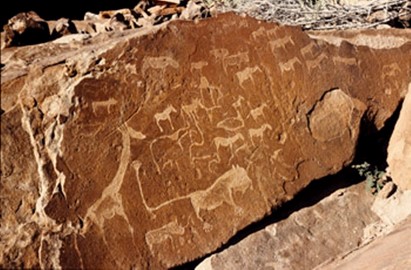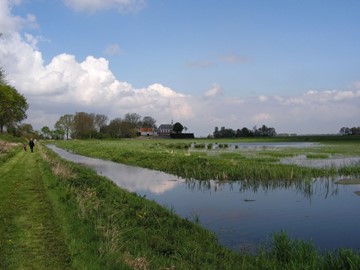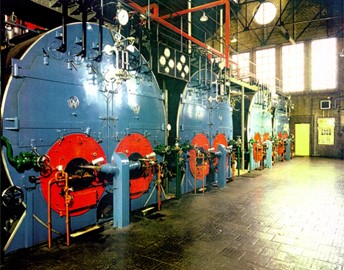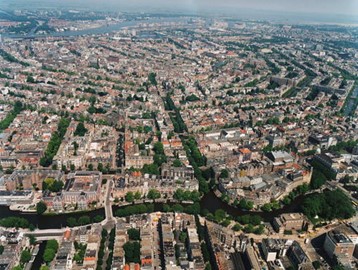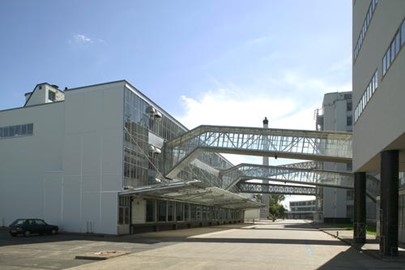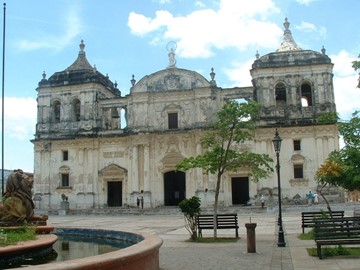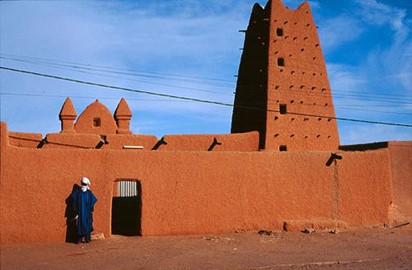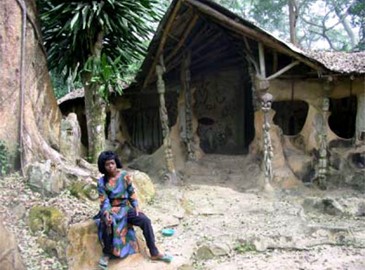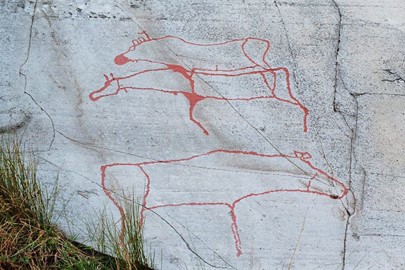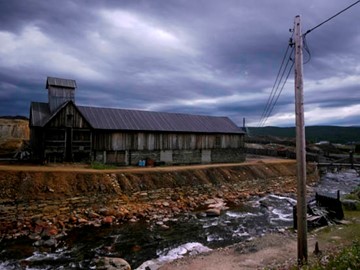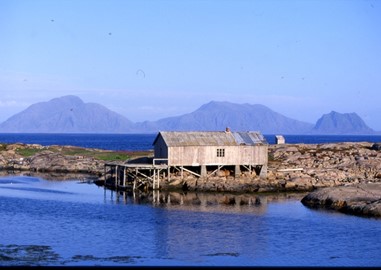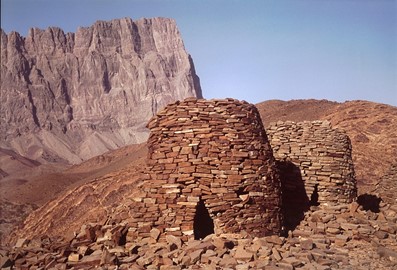category :: cultural
Twyfelfontein
Twyfelfontein, a UNESCO World Heritage site in Namibia, is renowned for its ancient rock engravings and paintings, created by hunter-gatherer communities over 6,000 years ago. The site features over 2,500 carvings, depicting animals like giraffes, rhinos, and ostriches, as well as human and animal footprints, offering a glimpse into prehistoric life and beliefs. Its geological significance is highlighted by the dramatic sandstone formations and evidence of early tool-making. This well-preserved open-air gal... Read More
Lumbini
Lumbini, a UNESCO World Heritage site in Nepal, is renowned as the birthplace of Siddhartha Gautama, the founder of Buddhism, born in 563 BCE. This sacred site features the ancient Maya Devi Temple, marking the exact spot of his birth, alongside the Ashokan Pillar, erected by Emperor Ashoka in 249 BCE to commemorate his visit. The surrounding monastic zones, with ruins of stupas and monasteries, reflect its historical significance as a pilgrimage center. Today, Lumbini attracts visitors worldwide for its sp... Read More
Kathmandu Valley
Kathmandu Valley, a UNESCO World Heritage site in Nepal, is renowned for its rich cultural heritage and historical significance. This ancient region is home to an array of stunning temples, palaces, and monuments, reflecting a unique blend of Hindu and Buddhist traditions. Its well-preserved medieval architecture, intricate wood carvings, and vibrant festivals highlight the artistic and spiritual legacy of the Newar people, the valley’s indigenous inhabitants. The site’s enduring charm lies in its ability t... Read More
Schoklands
Schokland, a UNESCO World Heritage Site in the Netherlands, is a former island in the Zuiderzee that symbolizes the Dutch struggle against water. Once a thriving settlement, it was abandoned in 1859 due to relentless flooding, only to be reclaimed as part of the Noordoostpolder in the 1940s. Rich with over 160 archaeological sites, it preserves traces of human habitation from prehistoric times, including ancient footprints and tools, alongside historic structures like dykes and terps, showcasing a unique bl... Read More
Defence Line of Amsterdam
The Defence Line of Amsterdam, a UNESCO World Heritage site in the Netherlands, is a historic military fortification system constructed between 1880 and 1920. Designed to protect the capital from invasion, it consists of a ring of 42 forts, intricate waterways, and floodable zones that could be inundated to deter enemies. This innovative defense strategy, known as the Dutch Water Line, showcases exceptional engineering and spatial planning, reflecting the Netherlands' military heritage and adaptation to its... Read More
Kinderdijk Elshout
The Mill Network at Kinderdijk-Elshout, a UNESCO World Heritage site, showcases a remarkable system of 19 well-preserved windmills dating back to the 18th century. This historic network exemplifies Dutch ingenuity in water management, using wind power to drain low-lying land and prevent flooding. The site includes traditional mills, pumping stations, and dikes, illustrating centuries-old engineering techniques still admired today. It stands as a testament to human adaptation to challenging environmental con... Read More
Willemstad
Willemstad, a UNESCO World Heritage site in Curaçao, is a vibrant Caribbean city renowned for its well-preserved colonial architecture and colorful waterfront buildings. Founded in the 17th century as a Dutch trading hub, its historic center features a unique blend of European and tropical influences, reflected in landmarks like the Queen Emma Bridge and the Mikvé Israel-Emanuel Synagogue, one of the oldest in the Americas. The city’s strategic harbor and rich cultural heritage make it a standout destinatio... Read More
Wouda Steam Pumping Station
The Wouda Steam Pumping Station, a UNESCO World Heritage Site in the Netherlands, is the world’s largest steam-powered pumping station still in operation. Opened in 1920, it showcases advanced Dutch hydraulic engineering with a capacity to pump 4 million liters of water per minute, originally designed to manage flooding. Its well-preserved steam engines and Amsterdam School architecture highlight its historical and technological significance. Today, it operates occasionally to supplement modern systems, sym... Read More
Beemster Polder
The Beemster Polder, a UNESCO World Heritage site in the Netherlands, is a remarkable example of Dutch ingenuity in land reclamation. Created in the early 17th century by draining a lake with windmills, this site showcases a meticulously planned landscape of fields, roads, canals, and dykes. Its geometric design reflects the Renaissance-era principles of order and symmetry, while its preservation highlights its historical significance as one of the first large-scale polders, demonstrating advanced water man... Read More
Rietveld Schröder House
The Rietveld Schröder House, a UNESCO World Heritage site in the Netherlands, is an iconic example of De Stijl architecture, designed by Gerrit Rietveld in 1924. Commissioned by Truus Schröder, it features a revolutionary open-plan design with movable walls, emphasizing functionality, simplicity, and abstract geometric forms. Its use of primary colors and clean lines reflects the artistic principles of the De Stijl movement, pioneered by Piet Mondrian. The house stands as a testament to innovative modernist... Read More
Amsterdam Canal Ring
The Amsterdam Canal Ring, a UNESCO World Heritage site in the Netherlands, is a remarkable 17th-century urban planning masterpiece. This historic network of canals, lined with elegant merchant houses, showcases innovative water management and architectural beauty. Constructed during the Dutch Golden Age, it features concentric canals, bridges, and tree-lined streets that reflect the city’s economic prosperity and cultural heritage. Today, it remains a vibrant, functional part of Amsterdam, attracting visito... Read More
Van Nellefabriek
The Van Nellefabriek, a UNESCO World Heritage Site in the Netherlands, is an iconic example of 20th-century industrial architecture, built in the 1920s. Designed with steel and glass facades using the innovative curtain wall principle, it was conceived as an 'ideal factory' that prioritized daylight and open, adaptable workspaces to enhance working conditions. This modernist structure reflects the functionalist culture of the interwar period and highlights the Netherlands' historical role in processing and ... Read More
León Viejo
The Ruins of León Viejo, a UNESCO World Heritage site in Nicaragua, offer a glimpse into one of the oldest Spanish colonial settlements in the Americas, founded in 1524 by Francisco Hernández de Córdoba. Abandoned in 1610 due to volcanic activity and earthquakes, this well-preserved archaeological site features remnants of homes, a cathedral, and a fortress, reflecting early colonial life. Excavations have revealed artifacts and human remains, providing insight into the daily lives and challenges of its inh... Read More
León Cathedral
León Cathedral, a UNESCO World Heritage site in Nicaragua, is a stunning example of colonial architecture blending Baroque and Neoclassical styles. Constructed between 1747 and the early 19th century, it boasts an ornate facade, grand arches, and a richly decorated interior with notable artworks and the tomb of poet Rubén Darío. Its robust design has withstood earthquakes, volcanic eruptions, and time, making it a symbol of resilience and cultural heritage. The cathedral stands as a testament to the region’... Read More
Agadez
The Historic Centre of Agadez, a UNESCO World Heritage site in Niger, is a well-preserved example of a traditional Sahelian urban settlement. Founded in the 11th century, it flourished as a key trans-Saharan trade hub, blending indigenous and Islamic architectural influences. Its notable features include the iconic 27-meter-high mud-brick minaret of the Agadez Mosque, a testament to local craftsmanship, alongside a labyrinth of narrow streets and earthen homes. Today, it stands as a cultural treasure, refle... Read More
Sukur
The Sukur Cultural Landscape, a UNESCO World Heritage site in Nigeria, features a historic hilltop settlement with the Hidi Palace overlooking terraced fields and villages below. Recognized in 1999, it showcases a well-preserved example of traditional land use and architecture, including dry-stone structures and sacred symbols tied to spiritual practices. The site also preserves remnants of a once-thriving iron-smelting industry, reflecting centuries of cultural and economic continuity. Its intact heritage ... Read More
Osun Osogbo
The Osun-Osogbo Sacred Grove, a UNESCO World Heritage site in Nigeria, is a centuries-old cultural and spiritual sanctuary dedicated to the Yoruba goddess Osun. This dense forest along the Osun River features ancient shrines, sculptures, and artworks, reflecting the rich traditions and religious practices of the Yoruba people. Revered as a symbol of fertility and prosperity, the grove hosts an annual festival that attracts devotees and visitors globally. Its preservation highlights its significance as a liv... Read More
Urnes Stave Church
Urnes Stave Church, a UNESCO World Heritage site, is a remarkably preserved example of 12th-century Scandinavian wooden architecture. Built around 1130, it showcases intricate wood carvings, including the famous 'Urnes style' animal motifs on its north portal, blending Norse and Christian influences. The church stands as a testament to medieval craftsmanship, with its stave construction—a technique using vertical wooden posts—demonstrating both durability and artistic sophistication. Today, it serves as a h... Read More
Bryggen
Bryggen, a UNESCO World Heritage site in Norway, is a historic waterfront district renowned for its well-preserved wooden buildings dating back to the Hanseatic League era. This vibrant area showcases a unique blend of Scandinavian and German architectural influences, with colorful gabled structures lining the wharf. Once a bustling trading hub for merchants, it now serves as a cultural landmark, housing museums, shops, and restaurants that reflect its rich maritime heritage. Its significance lies in its re... Read More
Rock Art of Alta
The Rock Art of Alta, a UNESCO World Heritage site in Norway, features thousands of prehistoric carvings and paintings dating back to 4200–500 BC. Created by hunter-gatherer communities, these artworks depict animals like reindeer, elk, and fish, as well as human figures engaged in hunting, fishing, and rituals. Discovered in the late 20th century, the site offers valuable insights into the daily life, beliefs, and environment of ancient societies. Its well-preserved state makes it a significant archaeologi... Read More
Røros
Røros Mining Town and the Circumference, a UNESCO World Heritage site in Norway, is a well-preserved historic mining town founded in 1646. Known for its copper mining heritage, the town features charming wooden architecture, including colorful 17th- and 18th-century buildings, and a prominent church that dominates the skyline. Its unique cultural and industrial history, shaped by centuries of mining activity, earned it a place on the World Heritage list in 1980. Today, Røros stands as a living museum, offer... Read More
Rjukan Notodden
Rjukan-Notodden, a UNESCO World Heritage site in Norway, is an outstanding example of early 20th-century industrial heritage. This site showcases a well-preserved complex of hydroelectric power plants, factories, and worker settlements, illustrating the innovative use of waterpower to produce fertilizers and heavy water. The area's historical significance lies in its pioneering role in the global chemical industry and its contribution to Norway's industrial development, all set against a dramatic natural la... Read More
Vegaøyan
Vegaøyan – The Vega Archipelago is a UNESCO World Heritage site in Norway, recognized for its unique cultural landscape shaped by generations of fishermen and farmers. Located near the Arctic Circle, it showcases a sustainable way of life based on fishing and the traditional harvesting of eider duck down, a practice dating back over 1,500 years. The site features fishing villages, quays, eider houses, and lighthouses, reflecting human resilience in a harsh environment and the significant role of women in th... Read More
Bahla Fort
Bahla Fort, a UNESCO World Heritage site in Oman, is a remarkable example of medieval Islamic architecture, showcasing the ingenuity of the Banu Nebhan tribe who dominated the region from the 12th to 15th centuries. Constructed primarily from mud brick, this imposing fortress features intricate defensive walls, towers, and a central keep, reflecting the strategic military design of its time. Its historical significance lies in its role as a center of power and trade, as well as its well-preserved state, off... Read More
Bat, Al Khutm and Al Ayn
Bat, Al-Khutm, and Al-Ayn form a UNESCO World Heritage site showcasing one of the most complete and well-preserved collections of 3rd-millennium BCE settlements and necropolises globally. The site features over 100 beehive-shaped tombs, monumental stone towers, and remnants of rural settlements and irrigation systems from the Bronze Age. Recognized in 1988, it highlights ancient trade networks and funerary practices, offering a unique glimpse into early human civilization.
